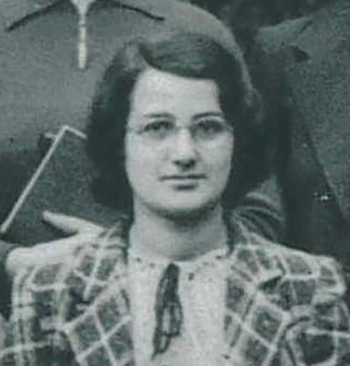Computing Herstory
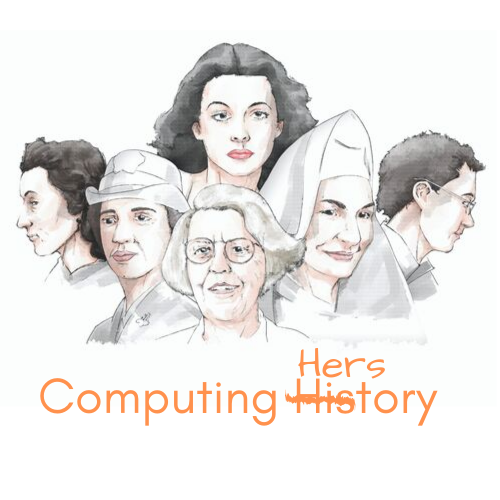
So what is going on here?
At CCH we wonder if the lack of a clear history recording the contributions made by women to the development of the technologies that surround us contributes to a perception that computing, and tech more generally, are the preserve of men and boys?
We’re sure it is more complicated than that but it surely can’t help that so many women seem simply to have been written out of history? Where did all the women go?
Women’s contributions have been huge yet many of their stories remain untold. At the museum we are well placed to put these contributions back at the centre of our shared history. We call this computing herstory.
The stories told here merely scratch the surface of women’s tech history but if a single person is inspired by them then they have served their purpose.
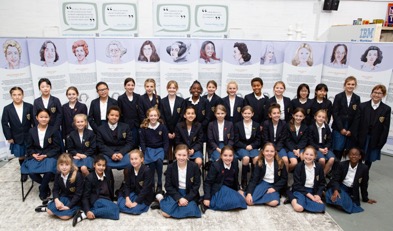
A very good question. Ask the average person and they can usually name a few. Ada Lovelace. Perhaps Grace Hopper. Katherine Johnson at a stretch.
But are there more?? Of course there are! Women have made contributions to the development of computing since before electronic computers were even a thing.
In fact, back in the time when computers were human, women were thought to be better at 'computing' than men...
Throughout the pages of this website, and throughout the museum itself, you'll find information about all the 'famous' (and the not-so-famous) women we've featured so far in our annual Women in Computing Festivals. The photo on the right shows the fabulous students of St Mary's Cambridge, opening our Festival in 2019. If you'd like to purchase a booklet bringing all this computing herstory together, then buy one of our Computing Herstory booklets from our gift shop.
But there are many more women whose contributions to the development of computing have been enormous. Here are some of those women, going back to the days before electronic computers were even a thing and the era of the earliest electronic computers - when women were actually considered to be much more suited to computing than men.
Human Computers
Mary Edwards
In the late 1700s, Mary Edwards was a human computer, undertaking calculations for the British Nautical Almanac, a series of complex tables to aid navigation at sea. She was one of very few women who were able to make a living from scientific work at the time, having previously quietly performed the calculations for her husband prior to his death. Eventually the Board of Longitude recognised her work in her own right and she was able to earn a living from doing it and even to pass on her skills and her passion to her daughter, Eliza.
Eliza continued computing for the Almanac until 1832, when the operation was centralised, making it impossible for women to continue computing at home. Her mother Mary Edwards was honoured in 2016 with a blue plaque in her home town of Ludlow. It recognises her as the first female computer. Remarkably, she also has a 'minor planet' named after her, the 12627 Maryedwards! Yet few people know her name.
The computing that Mary Edwards undertook involved the kind of complex or long and tedious calculations that we now rely on electronic computers to do. And there are swathes of women in computing herstory who did similar work. One such woman, who is more well known, though not for her 'computing' skills, is Florence Nightingale.
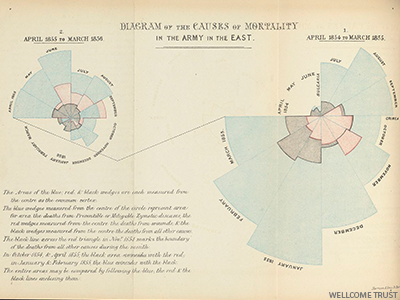
Computers now make big data easy but Florence Nightingale did it all by hand, collecting an awful lot of data, keeping meticulous records and then using carefully drawn data visualisation techniques to present her data in an easily understood way. Her 'coxcomb' pie chart (see image) was a triumph of complex information layered in a single space and it helped her change nursing and sanitation practices both at home and abroad, saving countless lives in the process.
Beatrice Cave examined the effects of loads on different areas of planes during flight and her research helped to improve aircraft stability and propeller efficiency. She also worked on bomb trajectories and detonators, as planes were beginning to play an important role in conflict.
In 1920 Beatrice Cave was awarded an MBE and she moved on to work in fluid mechanics in aviation. She was one of the first female human computers to sole-author an Advisory Committee for Aeronautics (ACA) Technical Report in 1922. Her government work remained classified for more than 50 years. Few people today have heard of her, so we are recognising her here.
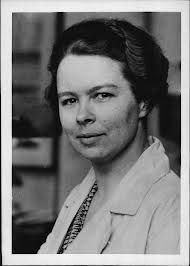 Katharine Burr Blodgett
Katharine Burr BlodgettKatharine Burr Blodgett worked for General Electric, as one of the first female scientists employed by the company, and there she invented low-reflectance invisible glass; the non-reflective coating is called a Langmuir–Blodgett film. She developed the technique for adding layers of film, just one molecule thick, to both sides of a sheet of glass until the visible light reflected by the layers cancelled that reflected by the glass, creating a perfectly transparent surface. Her inventions, which are literally invisible, have appeared in windshields, movie cameras, and computer screens. Imagine our computer and tablet screens and our movies now without that technology!
Interestingly, Gone with the Wind was the first major colour film projected through a lens with a coating based on Blodgett’s work, and its clarity wowed audiences on its release in 1939. Blodgett was issued eight US patents during her career and was the sole inventor on all but two of them.
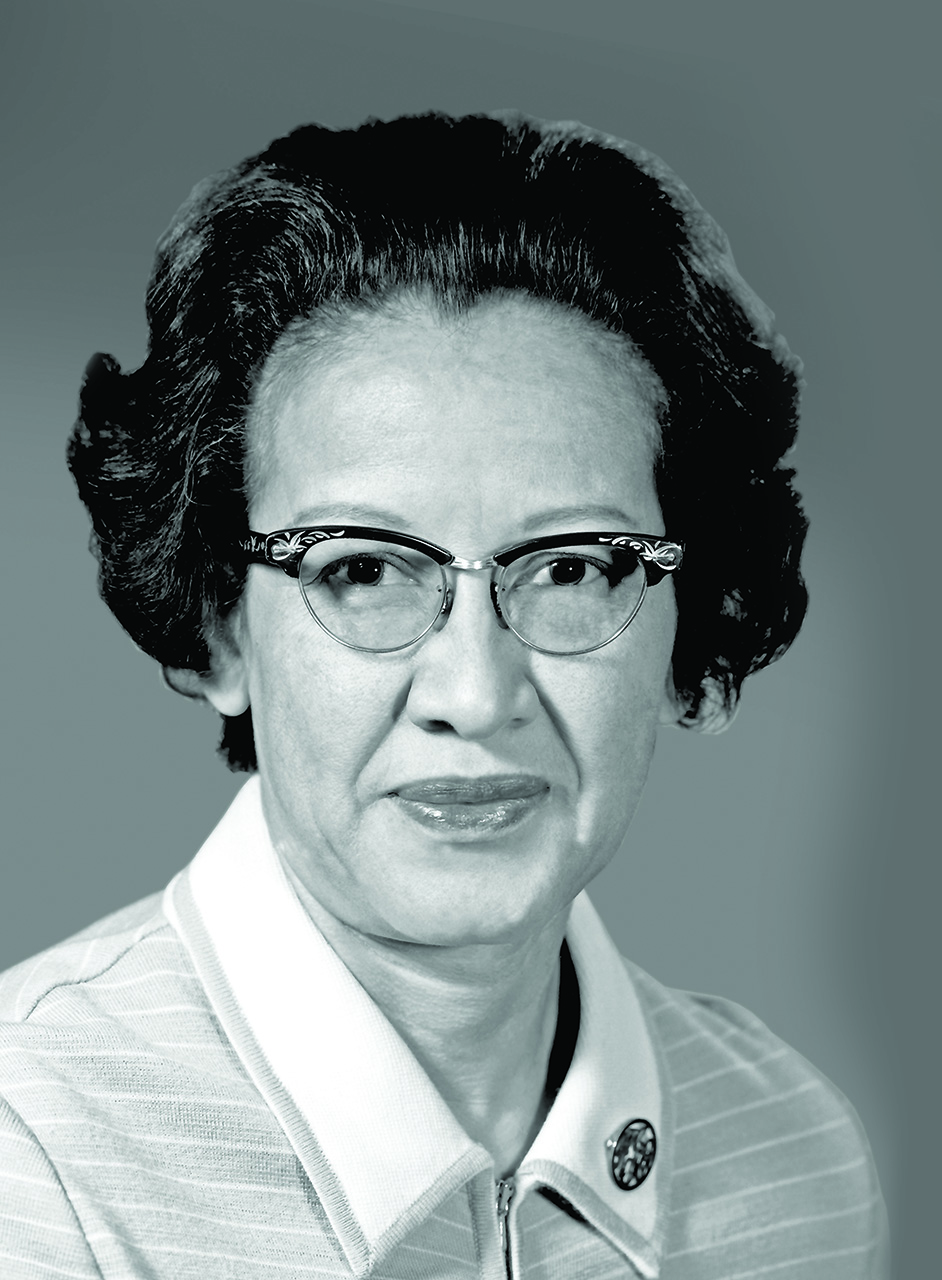
NASA's human computers
NASA's human computers used to be 'hidden figures' in computing herstory but they are hidden no more, thanks to several books, films and awards belatedly dedicated to these extraordinary, often African-American, women. For many of the war years and the earliest and most successful years of America's space programme, NASA made use of skilled female mathematicians who crunched the numbers that eventually put men on the moon.
The women weren't given recognition at the time, but fortunately their achievements have since been rightly lauded.
Katherine Johnson (left), Dorothy Vaughan and Mary Jackson are three of the hundreds of women who began as human computers, whose work underpinned NASA's space exploration efforts and who later often moved on to become programmers with the new IBM machines of the 1960s. All three were African-American women who started work at NASA when racial segregation and gender discrimination were the norm in schools, colleges and workplaces. They overcame significant barriers just to be able to gain an education and get a job. But they did both well and, in time, their computing skills helped propel their fellow humans into space while championing the role of women in the space industries.
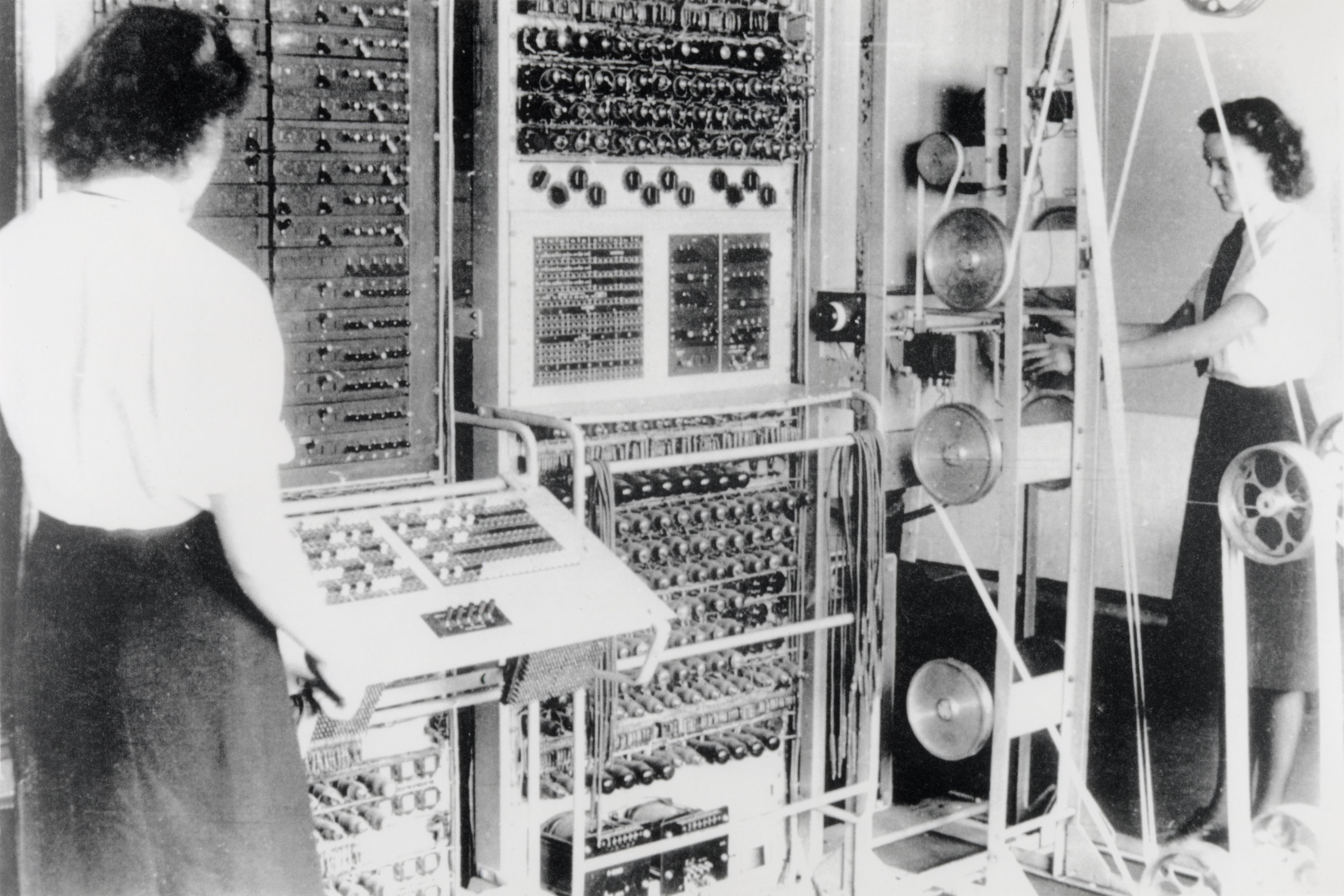
One of the first women to receive mainstream recognition was Joan Clarke, a mathematician and cryptanalyst who is known as much for her brief engagement to Alan Turing (and portrayal on the big screen by Keira Knightley) as for her work as the only female in Hut 8, the nerve centre cracking German Enigma codes. In fact, Joan was the longest serving member of Hut 8.
But they prevailed, along with the cryptanalysts they supported, shortening the war by up to 2 years. All the names of the known Colossus operators are rarely recorded, so we've detailed them all below.
Cicely Popplewell
Most people have heard of Alan Turing, the mathematics genius who many consider to be the 'father of computing', but who knows the names of the women who worked with him? We've mentioned Bletchley Park's Joan Clarke above, but we think others deserve a mention too.
Cicely Popplewell worked with Turing in 1949-50 on the Manchester Mark I, going on to become a reliable figure at Manchester University's computing service into the 1960s. She wrote the earliest mathematical subroutines for the Manchester Mark I and rewrote sections of the programming manual for the machine, which was one of the earliest stored program computers. She was the one who, along with the engineers, physically interacted with it in the physical, hot environment of the Manchester lab. By all accounts Turing was not easy to work with but Popplewell turned his genius into something altogether more practical.
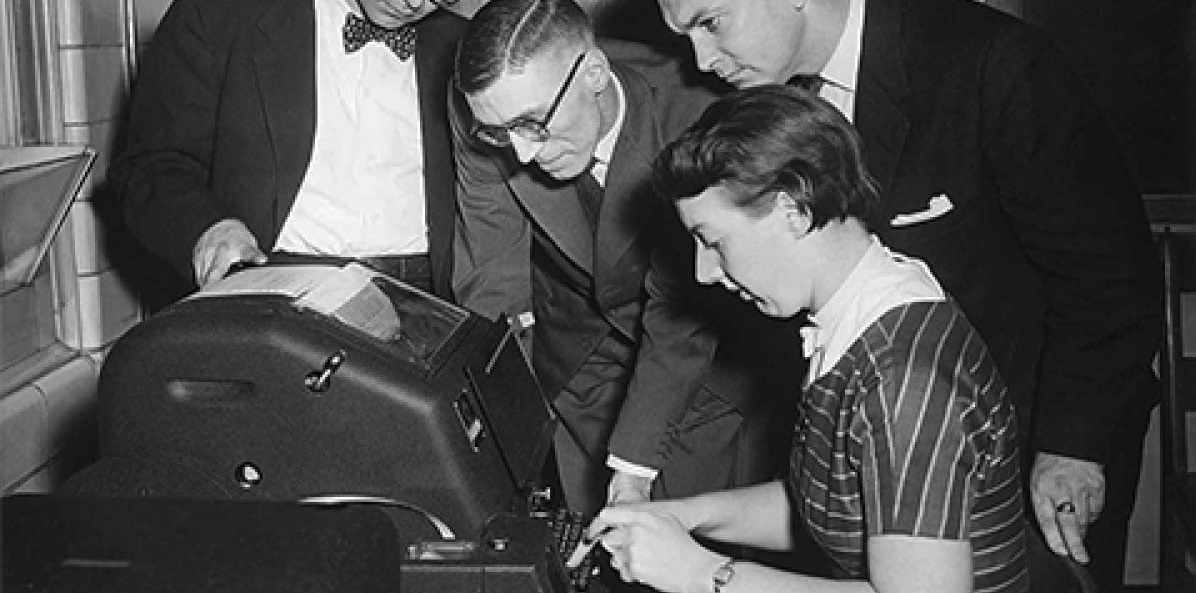
Mary Lee Woods was another early recruit of Ferranti's, starting with them in 1951. She is known now chiefly for two of her achievements: she successfully challenged Ferranti to pay her the same as her male colleagues for doing identical programming work (very much not the norm in the early 1950s when equal pay was not enshrined in law) and she later married Conway Berners-Lee, a computer scientist colleague, subsequently having two children, one of whom is Tim Berners-Lee, so-called 'father of the world wide web'.
Mary Lee left Ferranti in 1955 when her first child was born (Tim Berners-Lee), as was the norm then. She returned to programming sporadically over the next 30 years using languages such as Fortran and BASIC, often in what she called 'cottage-industry programming' that she could do from home. Tim Berners-Lee has said of his parents that they taught him that when you program a computer, what you can do is limited only by your imagination and it was this that helped motivate him to build a world wide web that could serve humanity.
Addendum:
As the full list of known Colossus operators, all of whom were women, is rarely recorded, we're recognising them here (in the format 'Family name (later name) First name'): Allum (Gardner) Joan; Anderson (Clegg) Diana; Aston (Osborne) Doreen; Balcomb (Nishio) Constance; Beach (Leftwich) M; Bennett (Bramley) Mavis; Booker (Pollard) Elsie; Borthwick (Hume) Doris; Bowden (Houghton) Margaret Betty; Bower (Kelly) Margaret; Bowser (Haworth) Eleanor; Bradbridge Jean; Bradridge (Pennock) Jean; Brennan Pamela; Broughton-Thompson (Mortimer) Margaret; Brown (Clarke) Catherine Brewis; Bruce (Pritchard) Pauline; Buckfield (Fitzgerald) Audrey; Cann (Benson) Rosabelle; Chavasse (Watson) Anna; Clarke (Bennett) Peggy; Clay (Coe) Muriel May; Cleary (Sheppard) Bernadette; Cooper (Hopwood) Barbara; Copeland Gwendolen; Cordwell (Fletcher) Pamela; Cottrell (Wheeldon) Shirley; Crabb (Creasey) Patricia; Cresswell (Usher Smith) Nola; Davis (Woodrow) Patricia; Deacon (Dawson) Sheila; Dixon (Arnot) Cecily; du Boisson Dorothy; Fitch (Cockayne) Lorna; Flack (Lambert) Margaret; Gay (Billingham) Rachel; Graves (Holland) Elizabeth; Griffiths (Dixon) Irene; Guest (Marsh) Doreen; Hallifax (Batty) Mary; Hansell (Tranah) Irene; Harker (Bagshaw) Patricia; Harris (Crooks) Judith; Harvey (Caughey) Catherine; Hedley Joyce; Henson (Rickards) Elizabeth; Hibbert (Warburton) Helen; Hope (Measures) Joan; Jaques (Sands) Dorothy; Keliher (Bolton-Carter) Josephine; Kennett (Martin) Josie; Kimber (Hockenhull) Rachel Ann; Knights (Tirrell)Pamela; Lewis (Howard) Elizabeth; Longbone (Bacon) Alison; Macadam (Henman) Margaret; Marsh Kathleen; Matthias (Rogers) Mary Quested; Mauritzen (Baker) Barbara; Millward Viv; Milton (Robinson)Joyce; Mitchell (Seeley) Barbara; Neville (Oakes) Priscilla; Oliver (O'Connell) Margaret; Palmer Joy; Paton (Langton) Anne; Philips (Freeman-Attwood) Marigold; Pottage (Belsey) Betty; Potter (Lloyd-Lewis) Alice; Preston, Hilda; Prince (Snow) Constance; Robb Jessie; Roberts (Morgan) Hazel Chisnell; Robertson (Eyre) Peggy; Rogers (Calvert) Elizabeth; Romanis (Scrafton) Dawn; Rule (Lovesy) Heather; Scott (Booth) Jean; Shiers (Lincoln) Dorothy; Skjold Anita; Slight (Shingler) Helen; Smith (Powell) Pauline; Spence (Wilks )Alice Lindley; Stewart-Meiklejohn (Herdman-Newton) Mary; Stokell (Hauser) Janet; Stott (Horridge)Joan Margaret; Stradling (Chorley) Kathleen; Stubbs (Sunderland ) Dilys; Sunter (Mashiter) Mary; Sutton Gillian; Swift (Langridge) Joyce; Taylor (Ryves) Rita; Thompson (Harvey) Jean; Thomson Anne, Trapp (Lucas) Eileen; Trueman (Scott-Martin) Patricia; Turner (Selley) Mollie; Walker (MacGilchrist) Ann; Walker Mary, Wallace (Amos) Ruth Farran; Walpole (Spencer) Katherine; Wedge (Baker) Marguerite; White (Buchanan) Hilda; Whitehouse (Saunders) Lilian; Williams (McDonald) Winifred; Wood (Smith) Aline; Woodman (Beach) Barbara. With grateful thanks to the Bletchley Park Roll of Honour for the details.
Please send comments to lisa@computinghistory.org.uk

